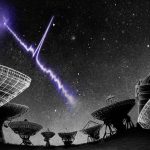Key Takeaways:
- Earth is moving 16,000 mph faster than previously thought and is 2,000 light years closer to the supermassive black hole at the center of the Milky Way, Sagittarius A*.
- These findings are a result of 15 years of data collected by the Japanese radio astronomy project VERA (VLBI Exploration of Radio Astrometry), which uses advanced interferometry techniques.
- VERA’s precision is so high that it could spot a U.S. penny on the Moon’s surface, thanks to a resolution of 10 micro-arcseconds.
- The new data has led to the establishment of a revised center for the Milky Way Galaxy, closer to Earth than previously believed.
- Earth’s velocity in its orbit around the Galactic Center has been recalculated to be 7 km/s faster than previously estimated.
Recent observations have revealed that Earth is on a more intense cosmic journey than previously assumed. While terrestrial concerns may already weigh heavily on our minds, it turns out that our planet is hurtling through space at an astonishing 16,000 miles per hour, and it’s heading much closer to the supermassive black hole residing at the heart of the Milky Way Galaxy than we ever imagined.
This remarkable revelation is the outcome of 15 years’ worth of data collected by the Japanese radio astronomy project known as VERA, or VLBI Exploration of Radio Astrometry. VERA utilizes advanced interferometry techniques, uniting data from radio telescopes across the Japanese archipelago.
This method provides an extraordinary level of precision, akin to having a telescope with a colossal 2300-kilometer diameter. To put this into perspective, the resolution is so sharp that it could potentially discern the presence of a U.S. penny if it were somehow left on the Moon’s surface.
The VERA Astrometry Catalog, in conjunction with more recent observations by other scientists, has allowed astronomers to assemble a new map that not only offers an updated center for the Milky Way Galaxy but also positions Earth differently in relation to it.

Arrows on this map reveal the positions and velocities of 224 celestial objects used to model the galaxy, with solid black lines indicating the locations of its spiral arms. Different colors represent groups of objects within the same arm, while the background provides a simulated image of the galaxy’s structure.
This freshly composed map designates a new center for the galaxy, which includes the supermassive black hole Sagittarius A*. Surprisingly, this center is approximately 2,000 light years closer to Earth, now situated at roughly 25,800 light-years away. This is notably closer than the previously accepted distance of 27,700 light years established by the International Astronomical Union in 1985.
Furthermore, this updated map has also recalibrated Earth’s velocity in its orbital path around the Galactic Center. It’s now understood to be moving at a speed of 227 kilometers per second, which is 7 kilometers per second faster than the previously recognized figure.
The implications of these findings may significantly influence our understanding of Earth’s place in the cosmos, prompting further investigations into our position within the Milky Way and our proximity to the enigmatic supermassive black hole at its core.


